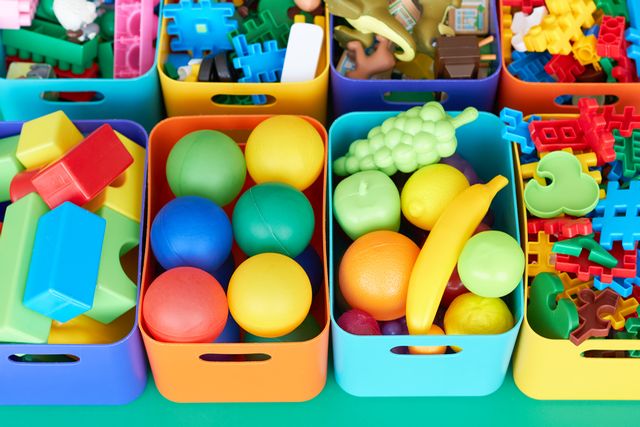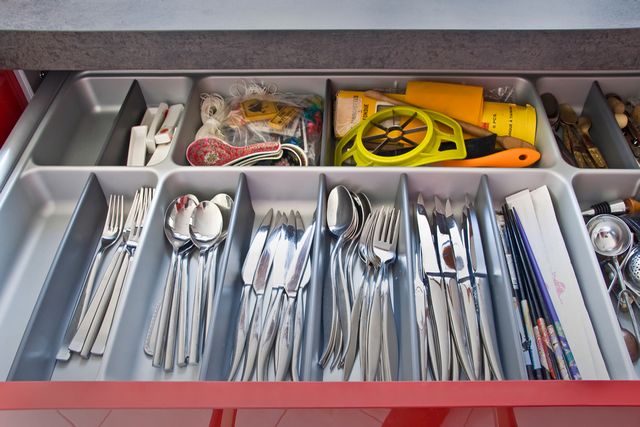General Information
ADHD Organizational Skills – Can the KonMari Method Help Your Child?
Can the KonMari Method Make a Difference in Your Child’s ADHD Organizational Skills?
Since the release of the television program “Tidying Up” with Marie Kondo on Netflix last month, the world seems to have gone KonMari crazy!
Marie Kondo is a Japanese organizing expert with a self-named method for organization called KonMari. Since the premiere of Kondo’s TV show, Tidying Up, there seems to be a line of demarcation between viewers. There are those that dismiss the quirky technique as unrealistic and those who call it life-changing.
What’s really interesting to me is that the KonMari method is sparking joy with people who have attention deficit disorder (ADD or ADHD). For people with ADD or ADHD, especially children, staying organized can be a critical life skill. So, if the kooky KonMari method is helping kids get organized, then parents everywhere can rejoice.

Why Organizational Skills for Kids with ADD / ADHD / Dyspraxia is So Important – and So Difficult
If your child has ADD or ADHD, or aspects of Dyspraxia, you might already be quite familiar with how difficult it can be for him or her to stay organized and tidy.
For those parents still struggling to understand why organizational skills for kids with ADHD are lacking, here are a few points of view. These are directly from young people and adults who explain the correlation:
Jenny explains:
“My condition makes keeping organized challenging as it’s hard to focus, and the resulting disorder in my home was a constant reminder of my inability to finish yet another project.
I would often walk into a room and forget why I went there. I lost things all the time and couldn’t seem to keep my school work organized. ADD is characterized by a sensitivity to stimuli. It’s not that we can’t pay attention, the issue is we pay attention to too many things at once” (Jenny)
Kerrylin says:
“I have been diagnosed with Autism and ADHD, so I really do have struggles with clutter and chaos overstimulating me.” (Kerrilyn)
And this from Sharon:
“We are so afraid we’ll lose something in a drawer or a folder — ‘out of sight, out of the ADHD mind’ — that we keep everything in the open where we can see it. But after a couple of days, we can’t see the important stuff anyway. It’s buried under the new stuff we don’t want to lose.” (Sharon)
Martin notes:
“So many people with ADHD, myself included, struggle to keep their living spaces clean and uncluttered” (Martin)
Clarissa, on her son, Tom:
“My son admitted that in college, he couldn’t do his schoolwork in his dorm. It was too chaotic and disorganized, and he couldn’t relax or focus. So, he started procrastinating homework to when he could go somewhere else. Until the procrastination went on so long that he missed the assignments and his grades plummeted.” (Clarissa, mum of Tom)
Clutter Affects Our Focus
Researchers at the Princeton department of neurology demonstrated something interesting regarding excess items in your surroundings. They showed that excess items in your surroundings have a negative effect on your levels of concentration and decrease your performance aptitude.
Back in 2012 Dr. Sherrie Bourg Carter gave a detailed look into why mess causes stress. In an article in Psychology Today she said,
“Clutter bombards our minds with excessive stimuli (visual, olfactory, tactile), causing our senses to work overtime on stimuli that aren’t necessary or important.”
Plus, the practical side of being disorganized is that if you can’t find something you need in the moment, your child’s ADHD brain can easily shut down the task entirely. This is either from overwhelm at not knowing where the item is, or in getting distracted while looking for it.
People with Dyspraxia don’t know where to start and how to go from one step to the other. They might get distracted or refuse to participate because they do not know how to plan and to progress through a multi-step task.
Could the KonMari Method Make a Difference in Your Child’s Dyspraxia / ADHD Organizational Skills?
How effective might the unorthodox techniques of the KonMari method be with helping kids get organized? Especially those who have ADHD?
First, here is a brief summary of how the KonMari method works:
1. Move through your home categorically, gathering everything into piles. Go through the pile item by item, quickly sorting between necessary and unnecessary.
2. Her categories are as follows (and it’s important to approach each in this order):
- a. Clothing
- b. Books
- c. Papers/documents
- d. Miscellaneous, such as kitchen utensils, that drawer that’s full of God-knows-what, electronics, etc.
- e. Sentimental items, such as photos, keepsakes, and any collectible items
3. As you sort items, the only criteria on which to base your “keep or toss” decision is this: “Does this item spark joy in my life?”
4. Any items that do not spark joy can be thanked for the value they brought into your life and discarded.
A Bit Cooky? Or Worth Trying for ADHD Organizational Skills
Now, for most westerners, the idea of an item sparking joy feels a little cooky. I mean, my spare surge protector doesn’t exactly spark joy in my life, but I need it around to make sure my laptop doesn’t spark fire.
And there’s the quirky anthropomorphism of talking to your home. And thanking a tattered T-shirt for doing its job for so long.
But, for abstract-thinking people with ADHD, these out-of-the-box considerations are part of the KonMari appeal.

Karen explains:
“It got me out of my rut and out of my head just enough to make some tough decisions about my stuff. It’s easy to think circles around your complicated relationship with an object, but what if you just asked the object?
What if it had feelings? How does that affect your decision to keep it in your home out of a sense of guilt or obligation?” (Karen)
Another characteristic of the technique that is helping ADHD-suffers find peace in their home is the fact that it encourages you to work on one category of items at a time, rather than tackling a large space room by room.
My brother Joe once explained his ADHD to me by using laundry as an example. “It sounds ridiculous, but if I have a basket full of laundry dumped on my bed, it’s overwhelming to think how long it might take me to get through all of it. An hour is a lifetime when your brain wants to be anywhere but here.
It would take me days to go back and forth between folding a bit of the laundry and getting distracted with something I wanted to do more. So, my therapist helped me realize that if I just tell myself to match all the socks first and put them away, it’s an approachable task.
Once that is complete, I can focus on just the shirts. And so forth. By ticking off lots of little “complete” tasks, I can work through a large project for a lot longer than if I were expected to just attack the whole project. “
So, for kids like Joe, the KonMari method might work wonders in training them to attack projects one category at a time.
Furthermore, the KonMari approach to categorizing things by topic or method of use seems to be quite helpful for people whose brain categorizes tasks and items a bit differently than the average person.
Kerrilynn finds the technique helpful:
“I love it. I found her simple approach easy to do. It has been a relief to let go of items I do not need anymore. I also found the folding techniques very helpful and have a lot more room in my drawers and able to see all my clothing in the drawers.
It is less cluttered and easier to keep on top of keeping it ordered, which I like. Having a low-stimulation space to relax in or do homework in is a life-changer for me.” (Kerrilynn)
Tips for Helping Kids get Organized Physically & Mentally with the KonMari Method
1. Use the KonMari method to teach your children about focusing on a category of tasks.
Applied to home organization, it means that if you find an important document while folding clothes, set the document aside and finish folding the clothes. Then, take the document to where it belongs.
Applied to homework, it means to jot down a question that popped into your head that’s unrelated to your math worksheet. When you’ve finished the math homework, then you can ask Mum the question about what kind of cake you should order for your birthday party.
Otherwise, the conversation about the birthday party could distract you from ever finishing the math homework.
Practice setting the distractions aside as if they were non-category items during the tidy process.
2. Practice setting realistic time goals for accomplishing tasks.
Learning how much physical tidying your child can do in a 30-minute block is helpful. By learning this, they start to understand the importance of realistic expectations. Just like my brother, Joe, subcategorizing his laundry into piecemeal tasks he could accomplish quickly.
Children with ADHD can practice subcategorizing their homework, their chores, and their daily routine. They can subcategorize into smaller tasks they can check off a list before getting distracted or losing motivation. Their confidence and optimism for accomplishment will grow leaps and bounds.
Two Cautions Regarding KonMari Method & ADHD
Some of the KonMari methods are going to be red flags for anyone dealing with Dyspraxia or ADHD organization skills.
For example, making a pile on the floor of every book you own will likely be disastrous. Each book will spark memories or curiosity, and it will take weeks to move through the pile.
And some of the techniques, such as the complex folding style of clothing, might have too many steps for a child with ADHD to handle.
If there are too many steps to keep something organized, they simply won’t become a habit. A child with Dyspraxia might find it overwhelming to follow the steps. But also, to know how to physically fold, they might revert to making a bundle – or refuse to try.
So, it will be important for parents helping their kids get organized to be flexible with Kondo’s rules. Give it a try, and see if her techniques can set your child up for the type of success that some, like Lindy, have discovered:
“Just wanted to say that Marie Kondo’s method absolutely changed my life. As someone who has struggled with disorganization and ADHD from childhood, I can now say with confidence that I am finally organized (two years later and no regressing!) Her methods may sound strange and daunting, but they make so much sense later.
My mother is still in disbelief every time she visits. It may have taken 40 years, but I’m finally a neat person (so much that others comment and ask me to help them get organized). As Kondo says, 2/3 of our stuff we really don’t use.
It is so important for an ADHD person to reduce and limit to essentials and what we love (right now, in the present). I feel like my brain is finally working after all these years. I hope others aren’t discouraged from reading her wisdom.” (Lindy)